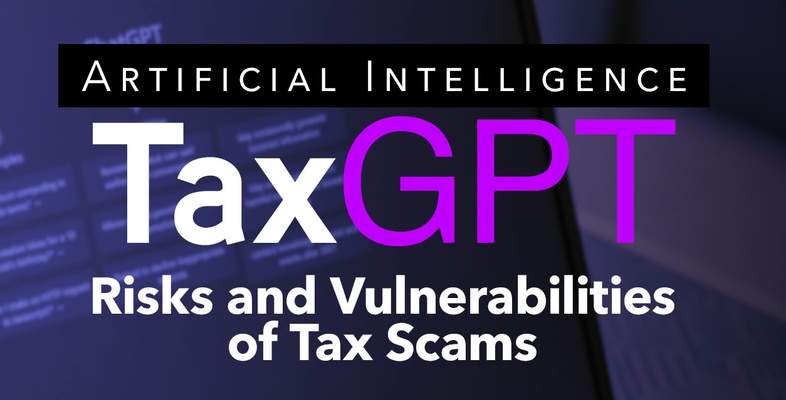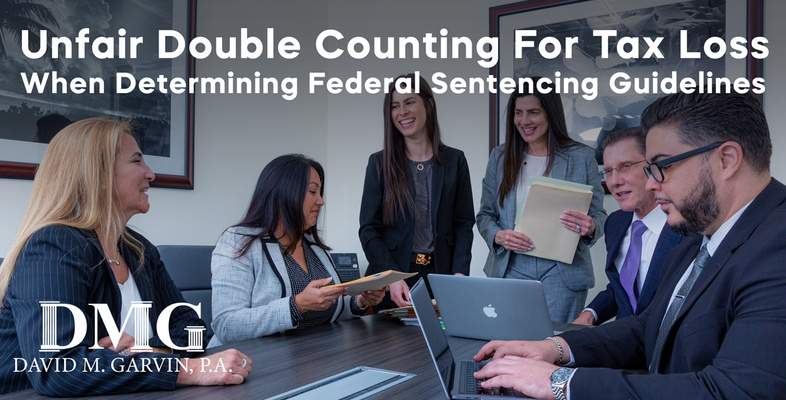Internal Revenue Code Section 7212 Vs Obstruction of Justice Section 1510
Internal Revenue Code Section 7212 is often referred to as the section that prohibits conduct that is generally viewed as obstruction of justice. Title 18 U.S.C. Section 1510 prohibits obstruction of criminal investigations in general. The question for sentencing is which guidelines should be used by the Court. Often the guidelines for a violation of Section 1510 will result in a shorter recommended sentence. This issue was addressed in detail in the case of United States v. Ballard, 850 F.3d 292 (6th Cir. 2017). The informative opinion of the appellate court is set forth below.
Opinion SUTTON, Circuit Judge.
John Ballard lied about his income, hid money in family members' bank accounts, and filed several Chapter 13 bankruptcy petitions that were dismissed. Through these and other inartful dodges, he tried to avoid paying $848,798 in taxes arising from his income as a securities broker between 2000 and 2008.
The Internal Revenue Service noticed. Even after the IRS started asking questions, Ballard told the agency that he did not have any income in 2009, when in truth he had made over $500,000 as a broker that year. The lies and deceptions led to a criminal charge, then a guilty plea, for violating 26 U.S.C. § 7212(a), which prohibits a party from corruptly obstructing or impeding the administration of the tax laws. This law prohibits the obstruction of justice in tax matters.
The Sentencing Guidelines say that district courts may sentence individuals for violations of that provision as a tax evasion offense or as an obstruction of justice offense, whichever is "most appropriate." U.S.S.G. App. A, Introductory commit.
Ballard urged the Court to use the obstruction of justice guideline. The obstruction of justice sentencing guideline provides for a lower offense level and shorter recommended sentence. The district court disagreed with Mr. Ballard’s position that the Court use the general obstruction of justice guideline. The Court rejected Ballard's argument that he never intended to evade paying his taxes but was merely delaying the payments (merely obstructing justice in other words) until he made real money—apparently more than $500,000 a year.
Use of the tax evasion guideline led to a higher offense level for Ballard and an increase in the sentencing range from 8-14 months to 24-30 months, and eventually led to a sentence of 18 months. The Court affirmed the sentence rendered by the District Court.
Starting in 1998, Ballard worked as a securities broker paid on commission. Not every firm he worked for withheld his income taxes. In 2008, the IRS classified him as a "non-filer" because he filed returns without paying his tax bills.
In response to IRS inquiries, Ballard filled out Form 433-A in January 2009, claiming no income and no ability to pay. In truth, he was employed by a securities brokerage in Texas and ended up making over $500,000 that year. Rather than starting to pay off the more than $800,000 he owed to the government at that point, Ballard spent that year's income on
(1) a new $96,000 Range Rover, which he titled in his wife's name and then resold six weeks later for cash,
(2) $25,000 in furniture for a new house he started leasing for $6,000 per month, and
(3) an $80,000, six-week trip to Palm Beach with his family.
He also sometimes used his wife's and his mother-in-law's bank accounts to deposit earnings and pay expenses.
Unamused, the IRS issued a notice of intent to levy his brokerage income in 2010. Ballard responded by quitting his job, apparently cutting his income to spite the IRS. He filed and later dismissed a Chapter 13 bankruptcy petition, halting the collection efforts of the IRS and his other creditors. This was not the only time he deployed this tactic, having done the same thing five times before and ten times since.
These evasive actions triggered a criminal investigation. In 2012, IRS agents interviewed Ballard. He denied having any employment in 2009 and claimed that all of the money he made that year arose from work for prior years. But in fact the money was payment for work he did in January, April, May, June, August, and December of 2009. And he knew it. That lie, charged the local United States Attorney, constituted "corruptly . . . obstructing or impeding . . . administration of the tax laws" in violation of 26 U.S.C. § 7212(a). Ballard pleaded guilty to that single count.
Ballard raised one objection at sentencing: Rather than sentencing him under the tax evasion guideline, the district court should sentence him under the obstruction of justice guideline, which in his case (though not always) would lead to a lower base offense level. His offense, he claimed, was more akin to obstruction of justice than tax evasion because all that was actually charged was the 2012 lie to IRS investigators, and he had always intended, he claimed, to pay his taxes once he had the money.
The district court applied the tax evasion guideline nonetheless, which produced an advisory range of 24-30 months. The district court varied downward and sentenced Ballard to 18 months, and it required him to make full restitution of his unpaid taxes. Ballard appealed the application of the tax evasion guideline, as his plea agreement permitted.
When a taxpayer violates § 7212(a)'s omnibus clause, as Ballard did, the Guidelines give the sentencing judge two options: § 2T1.1 (tax evasion) or § 2J1.2 (obstruction of justice). U.S.S.G. App. A.
Section 2T1.1 covers "Tax Evasion; Willful Failure to File Return, Supply Information, or Pay Tax; Fraudulent or False Returns, Statements, or Other Documents." It explains that the base offense level should be calculated under the Guidelines' tax table according to the "[tax] loss that would have resulted had the offense been successfully completed," and that the applicable "tax loss is not reduced by any payment of the tax subsequent to the commission of the offense." U.S.S.G. § 2T1.1.
Other offenses punishable under that section include evading taxes, 26 U.S.C. § 7201, willfully failing to file a tax return, keep records, or supply information as the tax code and regulations require, id. § 7203, making fraudulent statements under penalty of perjury in a "return, statement, or other document," id. § 7206(1), removing, depositing, or concealing "any [taxed or levied] goods or commodities . . . with intent to evade or defeat the assessment or collection of any tax," id. § 7206(4), and perpetrating various forms of fraud on the Secretary, id. §§ 7206(3), 7207; see United States v. Neilson, 721 F.3d 1185, 1188 (10th Cir. 2013).
Section 2J1.2, in partial but not complete contrast, covers "Obstruction of Justice." The section's background note explains that "[n]umerous offenses of varying seriousness may constitute obstruction of justice," including obstructing a criminal investigation, intimidating jurors, stealing or altering court records, intercepting grand jury deliberations, altering evidence, threatening or injuring witnesses, and impeding the communications of judges or law enforcement. U.S.S.G. § 2J1.2; see 18 U.S.C. §§ 1001, 1503, 1505, 1506, 1508, 1509, 1510(a), 1512, 1513, 1516, 1519; U.S.S.G. App. A.
This guideline thus "covers a broad range of conduct that generally involves interfering with the administration of the justice system." Neilson, 721 F.3d at 1188. Its instructions on "specific offense characteristics" tell courts what to do when the offense involves violence or threats, sex offenses, terrorism, or substantial fabrication or destruction of documents, but they do not mention tax offenses or lying to investigators specifically. U.S.S.G. § 2J1.2(b).
The Court reviewed the district court's application of the Guidelines to a set of undisputed facts in United States v. Kimble, 305 F.3d 480, 485 (6th Cir. 2002). When "more than one guideline section is referenced for the particular statute" of conviction, the Guidelines tell us to "use the guideline most appropriate for the offense conduct charged." U.S.S.G. App. A, Introductory comment.
The only offense conduct the Court should look at is what's described in the indictment or stipulated in the plea agreement. See U.S.S.G. § 1B1.2, comment. (n.1); United States v. Almeida, 710 F.3d 437, 441 (1st Cir. 2013); Neilson, 721 F.3d at 1187. The Court’s analysis of the relevant guidelines looks at function (what does each guideline section say it is for) and the neighborhood of covered offenses (what other crimes does the guideline section apply to). See United States v. Hochschild, 442 F.3d 974, 977-78 (6th Cir. 2006); Neilson, 721 F.3d at 1188. The question, at bottom, is whether the conduct described in the count of conviction is "more akin to the conduct covered" by one guideline section or the other. Neilson, 721 F.3d at 1187-88.
The district court thought the most appropriate guideline for Ballard's crime was § 2T1.1, and the appellate court agreed. The description of the offense conduct, as outlined in the indictment: that he "falsely stated to an Internal Revenue Service—Criminal Investigations Special Agent investigating Ballard's outstanding debt for taxes due . . . that commission checks Ballard received from NFP Securities, Inc. in January 2009, April 2009, May 2009, June 2009, August 2009, and December 2009 were for work done at an earlier date, and that he was not working in 2009, whereas in truth and in fact Ballard then well knew that these commission checks were for work done" in the months the checks issued.
This is just the sort of "Willful Failure to . . . Supply Information or Pay Tax" that § 2T1.1 is built for. He lied to an IRS agent. Why? To throw off the investigation of his "outstanding debt for taxes." That offense conduct could have been charged under other statutes punishable under § 2T1.1. See, e.g., 26 U.S.C. §§ 7201 (tax evasion), 7203 (willfully failing to supply required information). And the government would have incurred a tax loss of over $800,000 if that lie, in conjunction with his many other uncharged evasions, had succeeded. Even if Ballard is telling the truth about always intending to pay his tax bill once he hit it big—even indeed if he had already started repaying his outstanding taxes—§ 2T1.1 has a provision explaining how to account for that circumstance: Change nothing about the tax loss calculation. All of that points to § 2T1.1 as the right guideline. Yes, § 2J1.2 covers a broad genus of obstruction offenses, including Ballard's. But when another possible guideline explicitly includes the offense conduct, in addition to covering offenses that are close cousins of that conduct, that's where the offense belongs. See Neilson, 721 F.3d at 1188-89.
Ballard objected. Because he always admitted he owed taxes, because he had always intended to pay them one day, and because the only charged conduct was one false statement, he claims that his offense is more like obstruction of an investigation than tax evasion.
Like the district court, the appellate court felt that these points are fair. But like the district court, the appellate court determined they were unpersuasive in the end. Ballard's promise about intending to eventually pay his taxes is irrelevant to the determination of which guideline is the right one; the only facts that matter are the ones in the criminal information. See U.S.S.G. § 1B1.2; United States v. Malki, 609 F.3d 503, 510 (2d Cir. 2010).
Ballard stipulated that he lied to IRS investigators in order to avoid having to pay taxes at that time and that he failed to pay the debt even though he earned a significant income in 2009, conduct quite similar to tax evasion. But even if the appellate court looked outside the charges, the court had nothing but Ballard's word to indicate that he was going to pay one day. His promise was found to be less than credible, particularly in the context of his efforts to outmaneuver the IRS over a dozen years and the sudden appearance of his noble intentions only after being caught.
Nor was the Court swayed by the fact that the charged conduct was just one lie. The egregiousness of the offense does not determine which of these two sections is appropriate (though it can, and here did, drive the district court to vary below the guidelines range). What matters in the choice between two guidelines sections is which section is more precisely tailored to reflect offense characteristics—like tax evasion and tax loss—and which section covers a more closely related group of crimes. What Ballard did, and what the government charged, was a lie to the tax collector about his earnings. The appellate found that the district court sentenced Ballard accordingly.
For these reasons the Court affirmed.
A lawyer representing his client in a case in which a violation of Section 7212 is alleged should try to have his client sentenced using the general obstruction of justice sentencing guidelines.





